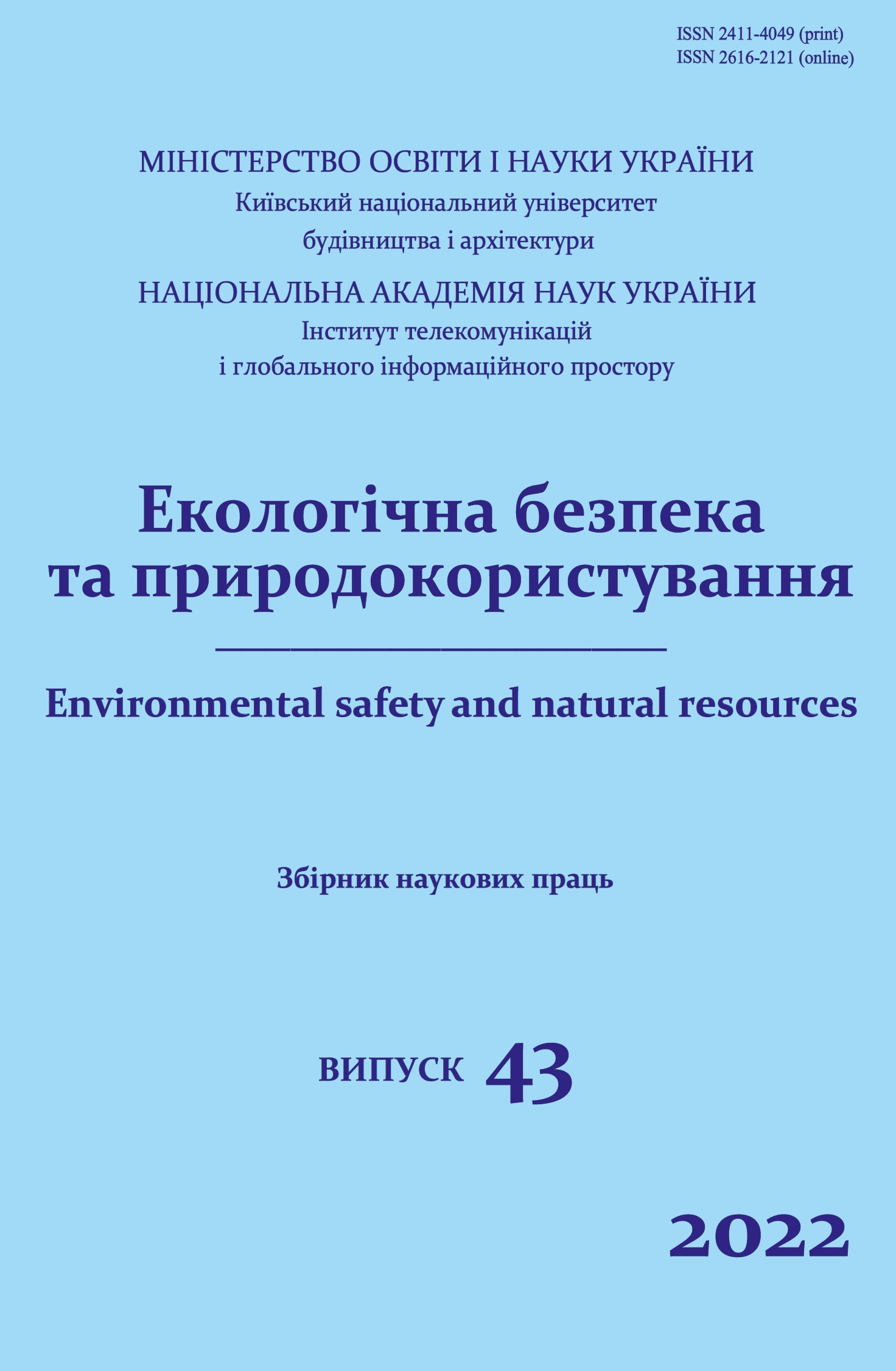Designing finishing materials with a gradient of electrophysical properties
DOI:
https://doi.org/10.32347/2411-4049.2022.3.73-80Keywords:
electromagnetic fields, screening, shielding coefficients, facing protective building materialAbstract
Тhe article discusses the basics of development and production of materials for shielding electromagnetic fields in a wide range of frequencies. The purpose of these materials is to cover large surface areas. The basic requirements for these types of materials have been established. The main ones are: the front surface must have electrophysical properties (dielectric and magnetic permeability) to ensure the lowest possible reflection coefficient of electromagnetic waves. At the same time, it is mandatory to simultaneously ensure the characteristics of strength, fire resistance, non-toxicity, etc. The content of radio-absorbing particles and effective dielectric (magnetic) permeability in the interlayer of the layered structure in the direction of growth of the substrate should ensure broadband and efficiency of the material. The dispersion dependence should ensure uniform absorption of electromagnetic energy and its passage from the input surface to the substrate in a given frequency range. Based on the maximum and minimum wavelengths of the shielding field, permeability and thickness of individual layers, calculations of the required thickness of the gradient material for a given reflection coefficient are given. Thanks to heat treatment of the surface of the material in the manufacturing process, the possibility of manufacturing monolithic metal-polymer screens with surface layers of low dielectric permeability is shown. The possibility of creating monolithic metal-polymer screens from ferromagnetic finely dispersed substances with an adjustable gradient in the direction from the front surface to the bottom is demonstrated, and a technical solution is given. This material can be used to control the ratio of shielding factors for high-frequency electromagnetic fields, ultra-low-frequency electric and magnetic fields, as well as concomitant shielding from natural magnetic fields.
References
Salski, B. (2012). The extension of the Maxwell Garnett mixing rule for dielectric composites with nonuniform orientation of ellipsoidal inclusions. Progress in Electromagnetics Research Letters, 30, 173-184. doi: https://doi.org/10.2528/pierl12020202.
Belyaev, A.A., Agafanova, A.S., Antipova, E.A., & Botanogova, E.D. (2013). Structural radar-absorbing material of a three-layer structure with a matching layer. Proceedings of VIAM, 4, 62-68 [in Russian].
Panova, O.V., Agafanova, A.S., Belyaev, A.A., Kondrashov, E.K., & Romanov, A.M. (2013). Features of the formation of monolithic structural radio-absorbing materials based on composites filled with resistive fiber. Aviation materials and technologies, 3, 56-59 [in Russian].
Lynkov, L.M., Bogush, V.A., Borbotko, T.V., et al. (2019). New technologies for creating electromagnetic radiation screens based on modified powder, nano-structured and film materials. Report of BTUIR, 2, 85-99 [in Russian].
Glyva, V., Kovalenko, V., Levchenko, L., & Tykhenko, O. (2017). Research into protective properties of electromagnetic screens based on the metal-containing nanostructures. Eastern-European Journal of Enterprise Technologies, 3(12 (87), 50-56. https://doi.org/10.15587/1729-4061.2017.103167.
Belyaev, A.A., Shirokov, V.V., & Romanov, A.M. (2014). Features of optimization of resonant radio-absorbing materials of non-magnetic type. Proceedings of VIAM, 11, 62-68 [in Russian].
Ukrainianets, E.A., & Kolbun, N.V. (2013). Shielding properties of multilayer structures of electromagnetic screens based on materials with small-sized inclusions of metals and liquid media. Doklady BSUIR, 4, 115-118 [in Russian].
Glyva, V.A., Levchenko, L.O., Panova, O.V., Tyhenko, O.M. & Radomska, M.M. (2020). Composite metal-polymer cladding material for electromagnetic field shielding. In theses of reports of the 4th international scientific and practical conference "Innovative technologies in architecture and design" (Section 4 "Latest building materials and modern technologies in architecture and design", pp. 155-158). Kharkiv: KhNUBA. Retrieved from http://www.itad.com.ua/%D0%9A%D0%BE%D0%BD%D1%84%D0%B5%D1%80%D0%B5%D0%BD%D1%86%D1%96%D1%8F-2020/ [in Ukrainian].
Kasatkina, N.V., Levchenko, L.O., Panova, O.V., Tikhenko, O.M., & Chenchevoi, V.V. (2020). Optimization of shielding parameters of electromagnetic fields of heterogeneous sources in industrial buildings. News of the Donetsk Mining Institute, 1(46). doi: https://doi.org/10.31474/1999-981x-2020-1-181-188 [in Ukrainian].
Rozanov, K.A. (1999). Fundamental limitations for the width of the operating range of radio-absorbing coatings. Radio engineering and electronics, 44, 526-530 [in Russian].
Glyva, V.A., Podoltsev, A.D., Bolibrukh, B.V., & Radionov, A.V. (2018). A thin electromagnetic shield of a composite structure made on the basis of a magnetic fluid. Tekhnichna elektrodynamika, 4, 14-18. doi: https://doi.org/10.15407/techned2018.04.014.
Downloads
Published
How to Cite
Issue
Section
License
Copyright (c) 2022 Biruk Y.

This work is licensed under a Creative Commons Attribution 4.0 International License.
The journal «Environmental safety and natural resources» works under Creative Commons Attribution 4.0 International (CC BY 4.0).
The licensing policy is compatible with the overwhelming majority of open access and archiving policies.

